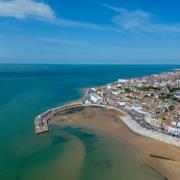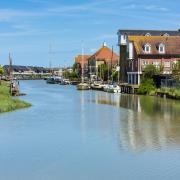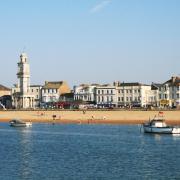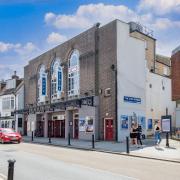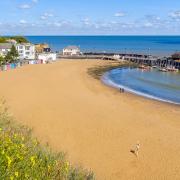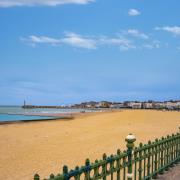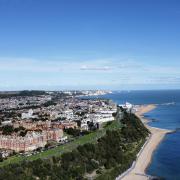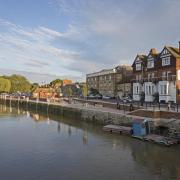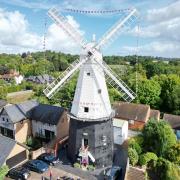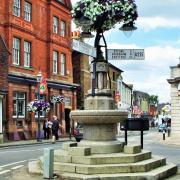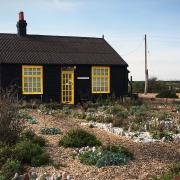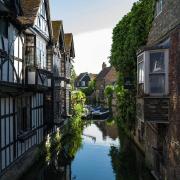Childhood home to one of our most celebrated authors, with a riverside setting and ancient landmarks, here’s what to look out for when you can next visit Rochester

History
It can be hard to imagine how some of our modern towns would have looked in the past, but this is not a problem in the heart of historic Rochester.
If the old cobbled High Street doesn’t make enough of an impact, there’s a 900-year-old castle and a similarly ancient cathedral just steps away from the town’s busy shops and restaurants.
Set on an easy bridging point on the River Medway, the area was first settled during the Neolithic period and later became an important stronghold of the Cantiaci tribe.
When the Romans invaded in AD 43, the settlement became known as Durobrivae, and a bridge was built to create a road connecting the coast with London. Even after the Romans had abandoned the country in the fifth century, Rochester remained an important Saxon town and was chosen by Augustine to house only the second cathedral in the country.
But it’s a Victorian resident that Rochester is probably best known for. Having spent much of his life in the area and been inspired by Rochester’s atmospheric streets and buildings, Charles Dickens incorporated his childhood home into some of his most iconic novels.
June is the 150th anniversary of the great writer's death, and the Medway Towns had always planned to mark the occasion with an array of events running throughout the year, the highlight being the Dickens Festival on 13 and 14 June.
This has inevitably been cancelled, but at the time of writing, there is hope for the annual Dickensian Christmas celebration in December.

Best bits
Best known for its Norman castle and cathedral, Rochester may be small, but it packs a lot into its compact town centre. Tourists and visitors have long been attracted to the town – which lost its city status due to an administrative error a few years ago.
The earliest version of the cathedral was completed in the seventh century. Still, it was built, rebuilt, extended and remodelled many times over the centuries – most crucially by the Normans under the first bishop of Rochester, Gundulf.
The Textus Roffensis is displayed in the crypt and attracts visitors keen to set eyes on one of the country's oldest texts. A medieval manuscript of two parts, written between 1122 and 1124, contains a list of law codes.
The cathedral also branches out on occasion to hold special events. Last summer, a nine-hole mini-golf course was set up in the nave for a month. Earlier this year, an incredible 120,000 people visited the cathedral over a three-week period to see the touring Museum of the Moon art installation.

Meanwhile, just across the road is Rochester Castle. The imposing ruins of a Norman keep also built by Gundulf; it was set above the river crossing in a defensive position. It is often said to be a masterpiece of medieval architecture, it is one of the UK’s earliest and tallest of such structures.
Fans of Charles Dickens come to see places like Restoration House, which he used as the setting for Miss Havisham’s home in Great Expectations.
And the Guildhall Museum has a room dedicated to the author. Not far away, in Higham, his final home was Gads Hill. Now a school, it is open for public tours at various times throughout the year.
Newly renovated, Eastgate House in the High Street is an Elizabethan building that tells the story of its long and varied life with a series of displays. Rochester’s fascinating Huguenot Museum tells the story of the area’s European Protestant refugees. A little further out of the town, you’ll find the Historic Dockyard at Chatham and the impressive Upnor Castle, an Elizabethan artillery fort on the west bank of the River Medway.
Developments
It’s easy to step into the past in Rochester, but it’s also an area striving to move forward in a changing world. A new railway station was opened in 2015, and high-speed trains take commuters into London St Pancras in 35 minutes. Near the station, along Corporation Street, a series of modern apartment buildings have sprung up in the last few years, now joined by a new Travelodge hotel.
It’s part of the growing Rochester Riverside development, which stretches from Rochester Bridge along the river towards Chatham.
When completed, it will comprise 1,400 new homes across seven development phases, retail units and a school, along with 10 acres of green space and a 2.5-kilometre public riverside walkway.
Just across the river, Strood is also undergoing regeneration work. The most noticeable is on the former site of Medway’s Civic Centre. Known as the Strood Waterfront development, it will provide more than 550 new homes with views across the river to Rochester.
Getting there
Just 30 miles from London, there are high-speed trains from the modern station to London St Pancras in 35 minutes. By car, there is easy access from London and the Kent coast on the M2/A2 and M20 motorways, linking with the M25.




